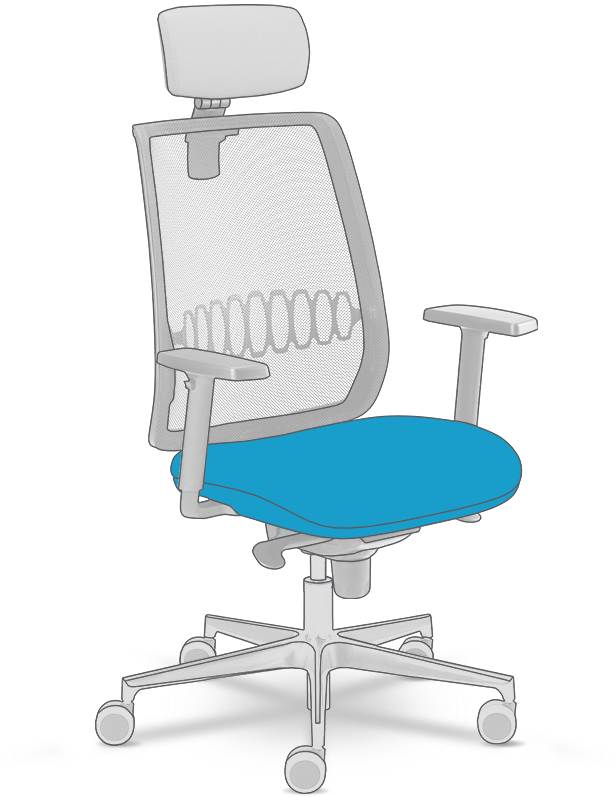Changes in the lifestyles in the 21st century
A lifestyle, that is the everyday behaviors, needs and motivations of people, has changed noticeably in the 21st century. We spend most of the time sitting, mainly at work, but also enjoying entertainment and resting. If you remain in a sitting position for a long time, it is necessary to ensure that you use a proper armchair or chair. A modern and ergonomic furniture should be adjusted to the curvature of the human spine, equipped with armrests, a solid base, and should provide the adjustments of all of its parts. Additionally, the seat should be wide enough not to restrict its user’s movements.
Proper posture at the desk

Spine – Head
The proper adaptation and regulation of the seat, backrest, lumbar support and headrest ensure the appropriate spine and head support, as well as correct body posture while sitting. A dynamic backrest offers permanent support of the spine when moving and lumbar support adjustment fitting the spine curvature maintains body in the right position.
Arm – Forearm
The armrests set at the appropriate height can be used as an extension of the desk, ensuring the proper forearm placement, which relieves spinal and shoulders. As a result, the proper angle between the arm and the forearm is achieved, enabling the hand to be pointed downward without strain.
Thigh – Calf
A height-adjustable seat enables the feet to rest firmly on the ground. Seat depth adjustment prevents excessive leg strain and does not constrict blood flow. A properly-adjusted seat enables the thighs to rest comfortably – perpendicular to the calves and parallel to the floor.






